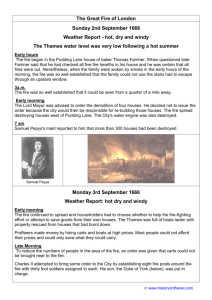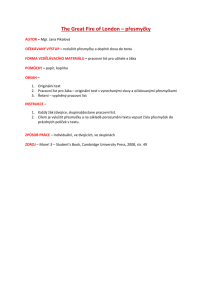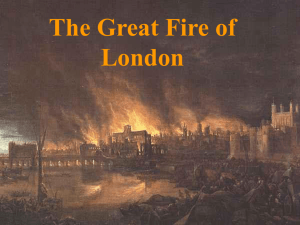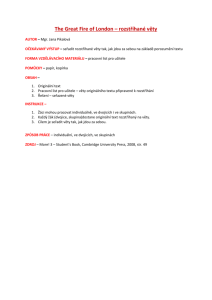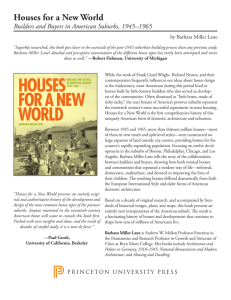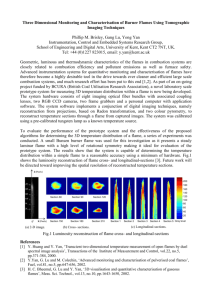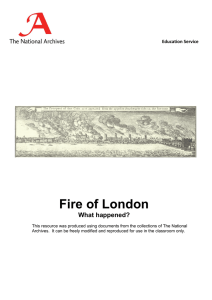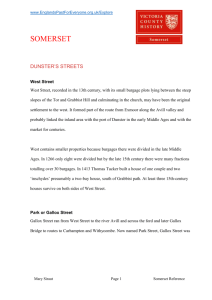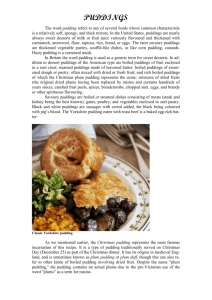The Great Fire of London
advertisement
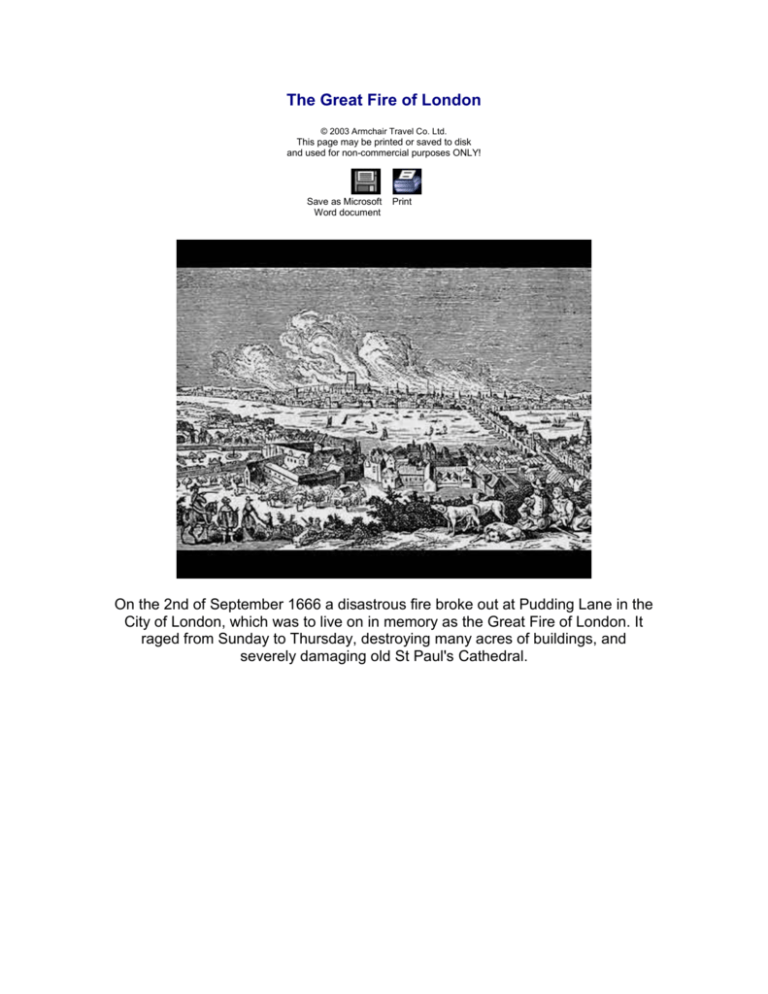
The Great Fire of London © 2003 Armchair Travel Co. Ltd. This page may be printed or saved to disk and used for non-commercial purposes ONLY! Save as Microsoft Word document Print On the 2nd of September 1666 a disastrous fire broke out at Pudding Lane in the City of London, which was to live on in memory as the Great Fire of London. It raged from Sunday to Thursday, destroying many acres of buildings, and severely damaging old St Paul's Cathedral. By 8.00 am on Monday, the north end of London Bridge was on fire, and 300 houses had been engulfed. Watching from a boat on the river was the diarist Samuel Pepys:The streets full of nothing but people and horses and carts laden with goods, ready to run over one another. In the evening, when we could endure no more upon the water, we landed at Bankside, Southwark at a small public house, and there stood and saw the fire grow, and as it grew darker appeared more and more, and in corners, and upon steeples, and between churches and houses, as far as we could see up the City, in a most horrid bloody malicious flame, not like the flame of an ordinary fire." - Samuel Pepys By 3.00 pm the Royal Exchange was on fire, and by 6.00 the same day the outbreak had reached Billingsgate. John Evelyn noticed a strange fatalism in the inhabitants: "The conflagration was so universal, and the people so astonished, that from the beginning, I know not by what despondency or fate, they hardly stirred to quench it, so that there was nothing heard or seen but crying out and lamentation, running about like distracted creatures, without at all attempting to save even their goods. God grant mine eyes may never behold the like, who now saw above 10,000 houses all in one flame; the noise and cracking and thunder of the impetuous flames, the shrieking of women and children, the hurry of people, the fall of towers, houses and churches , was like an hideous storm." - John Evelyn St Paul's caught fire at 8.00 pm. Quickly, it became an inferno, the roof caved in, crashing through the Cathedral floor to the Crypt beneath. The Cathedral burned for two days and nights, leaving just a bare skeleton. A Dr Taswell, who witnessed the scene as a boy, remembered it all his life: "As I stood upon the bridge (a small one over a creek at the foot of what is now Westminster Bridge), among many others (on Tuesday the 4th), I could not but observe the progress of the fire towards that venerable fabric. About eight o'clock it broke out on the top of St Paul's Church, almost scorched up by the violent heat of the air and lightning too; and before nine blazed so conspicuous as to enable me to read very clearly a small edition of Terence, which I carried in my pocket." - Dr Taswell By midnight on the Wednesday, with five sixths of the City destroyed, the fire was checked; and on the following day it was decisively halted. The fire's end is still marked by a small wooden figure at Cock Lane, near Pie Corner. (Hence the saying that the fire raged from Pudding Lane to Pie Corner). However the main memorial to the fire is the famous Monument, designed by Sir Christopher Wren... which stands surmounted by a coronet of gilded flames, 200 feet from the site of the house in Pudding Lane where the catastrophe began.
